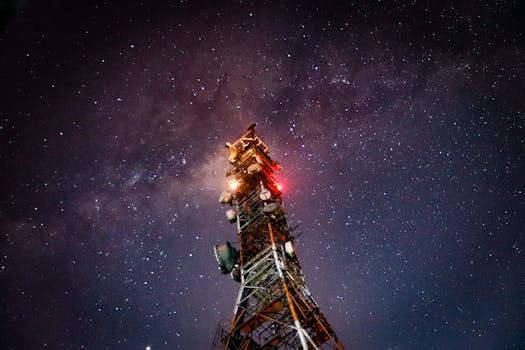
Starlink: Revolutionizing Global Internet Connectivity with Satellite Technology
Starlink, the focus keyword, is a satellite constellation developed by SpaceX, aiming to provide high-speed, low-latency internet connectivity worldwide, bridging the digital divide and transforming the way we communicate. With its cutting-edge technology, Starlink is poised to revolutionize the way we access the internet, making it faster, more reliable, and more accessible to everyone, regardless of their geographical location.
How Starlink Works
Starlink is a network of low-Earth orbit (LEO) satellites that work together to provide internet connectivity to users on the ground. The system consists of a constellation of satellites, each equipped with advanced technology, including Hall effect thrusters, star trackers, and antennas. These satellites communicate with ground stations, called gateways, which are connected to the global internet backbone. When a user sends data through the Starlink network, the signal is transmitted to the nearest satellite, which then relays the signal to the gateway, and finally, to its destination on the internet.
Benefits of Starlink
The benefits of Starlink are numerous, and its impact on global connectivity will be significant. One of the primary advantages of Starlink is its ability to provide internet access to remote and underserved areas, where traditional fiber-optic and cellular networks are often unavailable or unreliable. Starlink will also provide a reliable backup for existing networks, ensuring that critical communications remain online, even in the event of a disaster or network outage. Additionally, Starlink’s low latency and high-speed connectivity make it an attractive option for applications that require real-time communication, such as online gaming, video conferencing, and virtual reality.
Challenges and Future Developments
While Starlink has the potential to revolutionize global internet connectivity, there are also challenges and concerns that need to be addressed. One of the primary concerns is the potential for space debris, as the launch of thousands of satellites into low-Earth orbit increases the risk of collisions and damage to other spacecraft. SpaceX is working to mitigate this risk by designing its satellites to be able to de-orbit and burn up in the atmosphere at the end of their life cycle. Another challenge facing Starlink is the need for regulatory frameworks to govern the use of satellite internet services, ensuring that they comply with international laws and regulations.
Conclusion
In conclusion, Starlink is a groundbreaking technology that has the potential to transform the way we access the internet. With its ability to provide high-speed, low-latency connectivity to remote and underserved areas, Starlink is poised to bridge the digital divide and bring the world closer together. As the technology continues to evolve and improve, we can expect to see new and innovative applications of Starlink, from remote education and healthcare to disaster response and recovery.